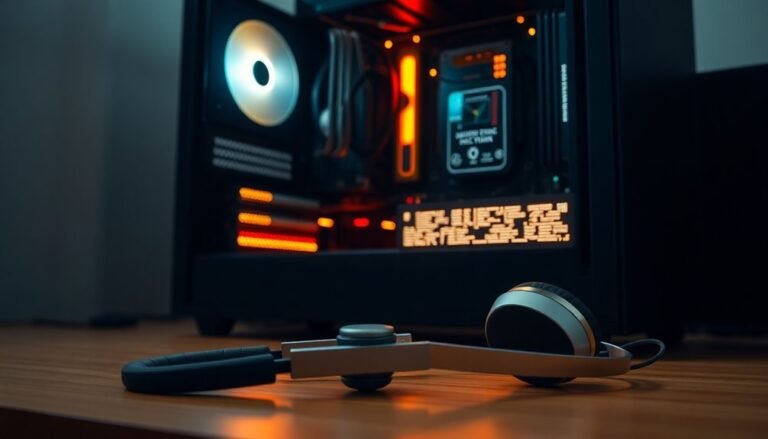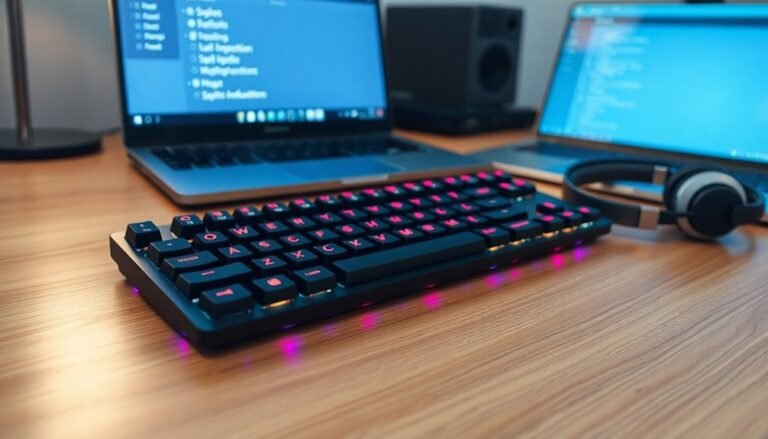Diablo 3 D3D Error Windows 11: Fix DirectX Game Issues
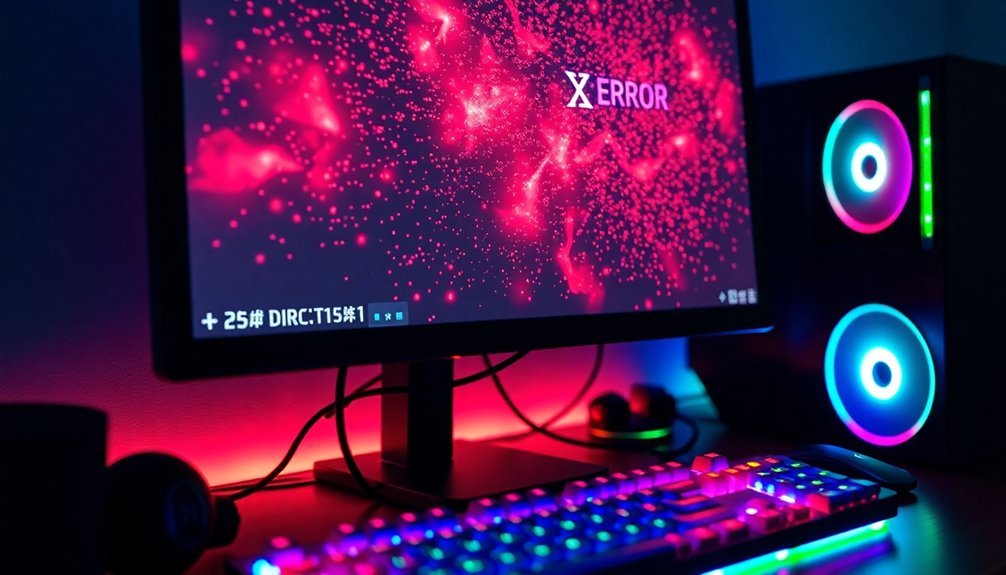
If you’re encountering D3D errors in Diablo 3 on Windows 11, start by checking your hardware compatibility. It’s also important to ensure that your graphics drivers are up to date.
Use the DirectX Diagnostic Tool to identify any conflicts. Additionally, you can repair corrupted system files with the System File Checker.
Verifying your game files through your game platform can help too. Remember to keep your DirectX updated for the best performance.
There are further steps you can take to enhance your gameplay experience overall.
Common Causes of DirectX Errors in Diablo 3
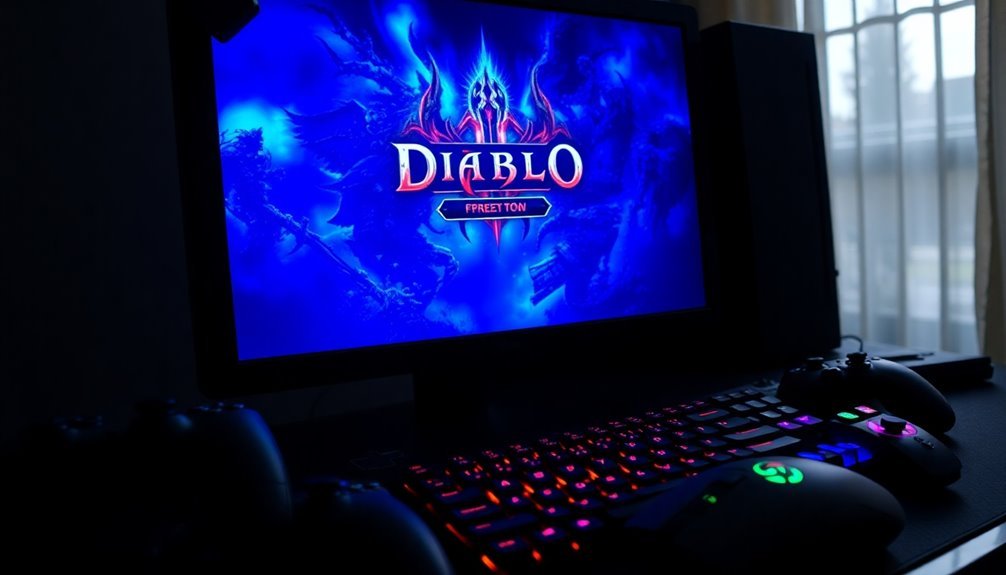
When playing Diablo 3 on Windows 11, you may encounter frustrating DirectX errors caused by several common issues. One primary culprit is hardware compatibility; if your graphics card doesn’t support DirectX 11 feature levels, you could experience crashes or error messages. The newest AMD beta driver version ensures optimal compatibility and performance for users with AMD graphics cards. Older GPUs often struggle with modern games, resulting in initialization failures. To combat this, ensure your graphics card meets minimum requirements.
Another frequent source of DirectX errors is outdated or corrupted drivers. If your GPU drivers are incompatible or not up to date, performing a clean reinstall can significantly improve performance and restore stability. Additionally, conflicts during DirectX installation can lead to problems. A corrupted or improperly installed DirectX runtime may hinder Direct3D initialization, particularly if different versions are mixed.
To prevent this, ensure that you have the correct and latest version of DirectX installed. Software conflicts, particularly from background applications or overlays, can also disrupt your gaming experience. If you use third-party enhancements like SweetFX, ensure they’re properly configured to avoid unexpected crashes.
Essential Troubleshooting Steps for DirectX Issues
To effectively resolve DirectX issues in Diablo 3, it’s important to follow a series of essential troubleshooting steps that can improve your gaming experience.
Begin by using the DirectX Diagnostic Tool (DxDiag) to collect detailed system information and detect any hardware or driver conflicts. To access it, simply search for “dxdiag” in the Start menu. This tool can provide invaluable insights into your system information and highlight any potential issues.
The next step is to run the System File Checker (SFC) to repair any corrupted system files. You can do this by opening Command Prompt as an administrator and entering the command `sfc /scannow`. This will help ensure that your system files are intact.
Following this, verify and repair your game files through your game platform, such as Steam. This step is crucial to ensure that all necessary game components are present and functioning correctly.
Additionally, consider adjusting the compatibility settings for Diablo 3. Right-click on the game executable, then choose either Windows 7 or 8 compatibility mode, and make sure to run it as an administrator.
Finally, it’s essential to check for updates to your graphics drivers. Keeping your graphics drivers up to date, or reinstalling them if necessary, can resolve potential conflicts that impact DirectX performance and enhance your overall gaming experience in Diablo 3.
Updating DirectX and Related Components
Keeping DirectX and related components up to date is crucial for optimal performance in Diablo 3 on Windows 11. Since DirectX 12 is integrated with Windows 11, there’s no standalone installer available; instead, necessary updates are delivered through Windows Update.
To ensure you have the latest version of DirectX, follow these steps:
- Open Settings on your Windows 11 device.
- Go to Windows Update.
- Select Check for Updates.
Installing all available updates will ensure you’re equipped with the most recent version of DirectX.
Additionally, it’s important to check your installed DirectX version using the DirectX Diagnostic Tool (dxdiag). To achieve proper graphics performance, your hardware must support DirectX 12 and utilize WDDM 2.0 drivers.
If your system supports only older versions of DirectX, you might experience compatibility issues with modern applications and games. For games that require legacy DirectX 9 components, consider downloading the DirectX End-User Runtime**** to fix any related errors.
Lastly, frequently updating your system firmware and drivers is essential to effectively run DirectX updates and maintain seamless game performance.
Stay proactive in keeping your system updated to enjoy the best gaming experience possible in Diablo 3 and other modern applications on Windows 11.
Graphics Card and Driver Considerations
Graphics card compatibility is crucial for ensuring smooth gameplay of Diablo 3 on Windows 11. If your graphics card meets the recommended specifications, you can significantly reduce the likelihood of encountering common DirectX errors.
To maintain system stability, ensure that your GPU drivers are up to date, as outdated drivers can lead to various performance issues.
Here are some essential considerations for optimal performance:
- Regularly check for the latest driver updates from reputable sources like NVIDIA or AMD. Keeping your drivers updated is key to avoiding compatibility issues.
- Upgrading to a dedicated graphics card can greatly enhance gaming performance, especially for demanding titles like Diablo 3.
- Ensure your system has a minimum of 8GB of RAM. This amount of memory is crucial for supporting a seamless gameplay experience.
Your graphics card should support DirectX 11 or higher. Be cautious with older integrated graphics, as they may struggle to meet the game’s demands, potentially leading to “missing required features” errors.
If you experience any problems, consider rolling back to a previous driver version; this may help resolve any compatibility issues. Investing in a mid-tier dedicated GPU won’t only improve your gaming experience but also minimize DirectX errors while playing Diablo 3 on Windows 11.
Additional Settings to Mitigate DirectX Errors
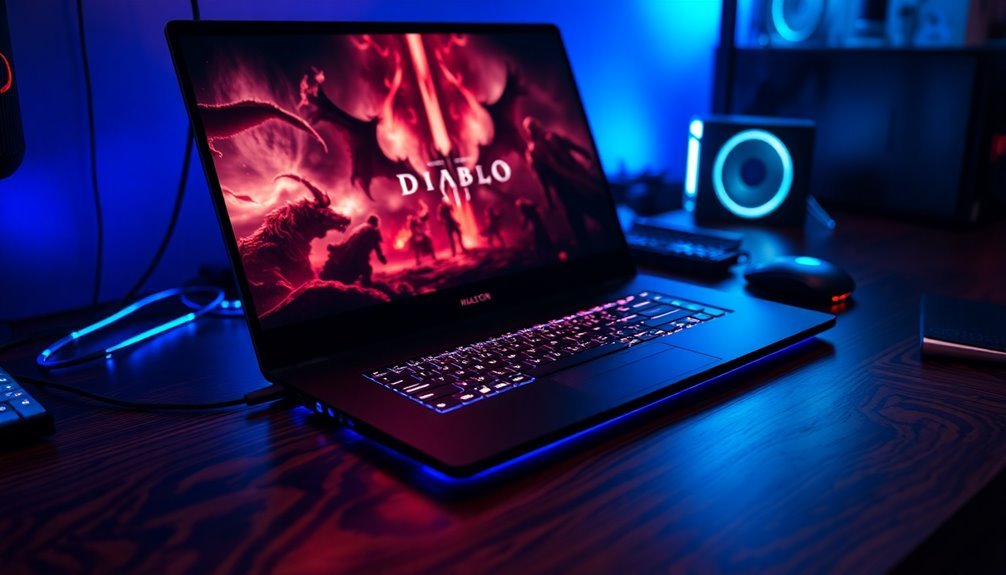
troubleshooting DirectX errors can be daunting, but there are several effective settings adjustments you can make to enhance your Diablo 3 experience on Windows 11. First, enable Hardware Accelerated GPU Scheduling in your system settings. This feature improves GPU management and reduces latency, leading to a smoother gaming experience.
Next, turn on Optimizations for Windowed Games to elevate performance, which can be beneficial even in fullscreen mode. Additionally, make sure to close unnecessary background applications to free up system resources and prevent any potential conflicts that may disrupt your gameplay.
Consider adjusting your display scaling settings by disabling high DPI scaling specifically for the Diablo III executable, as this can help resolve cursor-related issues.
In-game settings are also crucial; setting shadows to low or completely disabling them can significantly reduce GPU strain. It’s advisable to turn off Triple Buffering, as this setting may destabilize your gameplay experience.
For optimal compatibility, ensure your game is running on the DX11 API. Lastly, if you experience any persistent DirectX errors during your gameplay, regularly check and reset your video settings to the default configuration to help mitigate these issues.
Preventive Measures for Long-Term Stability
To ensure long-term stability in your Diablo 3 gameplay, it’s crucial to focus on system updates and driver maintenance.
Keeping your system up-to-date not only enhances compatibility with DirectX but also helps mitigate crashes caused by D3D errors. Here are some effective preventive measures you can implement:
- Update Windows regularly to ensure you meet the latest game requirements and enhance overall performance.
- Check your graphics card drivers frequently from official sources to prevent unexpected crashes and maintain optimal gaming performance.
- Conduct routine scans for corrupted files and utilize official troubleshooting tools to replace any incompatible DirectX runtime files.
Frequently Asked Questions
What Are the Minimum System Requirements for Diablo 3 on Windows 11?
To play Diablo 3 on Windows 11, you need a CPU like Intel Core 2 Duo, at least 4 GB RAM, a GPU equivalent to Nvidia GeForce 8800 GT, and 25 GB of disk space.
Can I Play Diablo 3 on a Laptop With Integrated Graphics?
You can play Diablo 3 on a laptop with integrated graphics, like Intel HD 4000. Just remember to set graphics low, crank down resolution, and update drivers to guarantee a smooth gaming experience.
How Can I Check if My Directx Installation Is Corrupted?
To check if your DirectX installation is corrupted, run the DirectX Diagnostic Tool (dxdiag) and review the logs for errors. You can also execute `sfc /scannow` in Command Prompt for further verification.
Is There an Easy Way to Uninstall Conflicting Background Applications?
Yes, you can easily uninstall conflicting background applications using Control Panel or Settings. Just locate the app, select it, and choose uninstall. For stubborn apps, try using Task Manager or boot into Safe Mode.
Does Using Mods Affect Diablo 3’s Compatibility With Directx?
Yes, using mods can affect Diablo 3’s compatibility with DirectX. Mods targeting DirectX 9 can cause conflicts with DirectX 11, leading to crashes or instability. Always verify your mods are updated for compatibility with the game’s DirectX version.
Conclusion
To conclude, tackling DirectX errors in Diablo 3 on Windows 11 might feel like chasing your tail, but it’s manageable with the right steps. By updating DirectX, checking your graphics drivers, and tweaking your settings, you’ll get back to slaying demons in no time. Remember to stay proactive with updates and maintenance to keep your gaming experience smooth. With a little effort, you can enjoy hours of uninterrupted gameplay and avoid those pesky errors.

